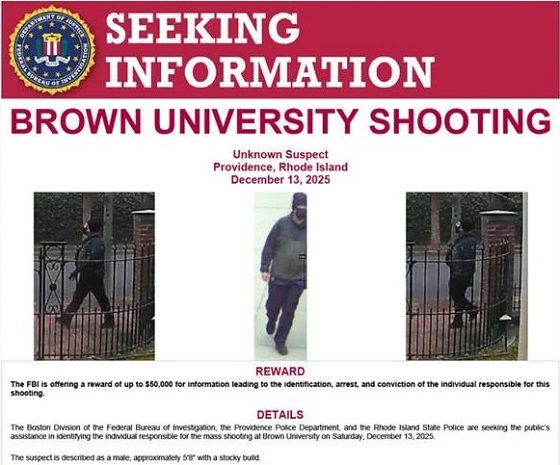Crime
EPS is highlighting the risks of finding love online

The victim of an online romance scam is sharing his story in hopes of preventing more people from being taken advantage of by scammers. Online romance scams are a lucrative business- in 2018, the Edmonton Police Service investigated 11 incidents of romance scams totaling an overall reported loss of $1,115,219.74.
Con was in the hospital when he received a message from a woman who said she had seen his dating profile. He was happy to have the company while he was confined to the hospital bed – even if it was just over the phone.
Sample of images sent to portray the woman’s online profile
She said she was a United States citizen on an overseas contract as a computer civil engineer. She was a single mom; her son was nine-years-old. Eventually, she would say that she “fell in love with a guy from the internet”.
Months into their chats, the requests for money began; she said the camera on her phone was broken but she couldn’t afford to fix it, so she needed $600 to replace it. Con denied her request so she stopped contacting him, but months passed and they started talking again. She asked him for money once again, telling him she was relying on him to get her and her son to the States. So he gave what he could towards a new phone- $100. It wasn’t enough, so she stopped talking to him.
Nearly a year later, she asked him if he still loved her; the continued to talk for a couple of weeks and then she told him she was laid off and needed help. He told her to go to the U.S. Embassy for help, but she admitted that it was an illegal work contract. She needed to get home, but she didn’t have enough; she was a mere $1500 short.
The next day, ticket prices went up. He paid the difference. And then her son was diagnosed with malaria. Shortly after, they were in a collision and had hospital bills – she even sent x-rays. But she had money back home; she just needed help paying the hospital bills in order to be released from the hospital. Once she got home she would be able to pay him back. She even “proved” her financial state by sending a picture of her bank accounts in the U.S.A; she just couldn’t access them while overseas.
Sadly, Con’s dream of having a family was used against him by fraudsters. When one of his banks interfered and the Edmonton Police Service investigated his case, this romance scam came to $143,000.
When asked why he sent the money, he pauses… “Hope that it would be real. Having her and her kid. Money isn’t important. This is; having someone else in the house besides me.”
Protect Yourself
It is important to remember that romance scammers do this for a living – it’s their job and it can be very profitable.
“It’s absolutely heartbreaking that these scammers are taking someone’s desire for happiness and using it against them,” Detective Linda Herczeg stated. “They commit all of their time into these scams because it’s their job and it’s lucrative.”
Websites and apps are constantly used for matchmaking, friendship building, and networking, but users should be aware of the potential risks.
Signs that a social media or dating profile user is a scammer
- They ask you for money.
- They profile you and tell you everything you want to hear.
- They will find out what you are looking for in a relationship and create events that will play on your emotional to get you to send money – sick children, airline tickets to come be with you/marry you so you can be a family.
- They groom you for as long as it takes (days, months, years) to get your money by being very attentive, lavishing you with attention, compliments and tell you that they love you. Usually they profess their love early in the relationship.
- They are always available because it is usually a group of individuals that are sending you messages, working off a script.
- The images of your “loved one” will be stolen off the internet.
- Your “loved one” will rarely have a voice conversation with you or have a live conversation via FaceTime or Skype.
- Your “loved one” will always have an excuse why they cannot meet you.
- They will always find a reason for you to send them more money.
You can find more information on online scams and online dating safety tips on the EPS website.
The EPS reminds citizens that fraud prevention is continuous – we need to recognize it through continual education, report it, and stop it. We ask that you share this information with those in your life who may be a target for romance scams.
If you are a victim of any fraud, please contact the EPS at 780-423-4567 or #377 from a mobile device.
Crime
Brown University shooter dead of apparent self-inflicted gunshot wound

From The Center Square
By
Rhode Island officials said the suspected gunman in the Brown University mass shooting has been found dead of an apparent self-inflicted gunshot wound, more than 50 miles away in a storage facility in southern New Hampshire.
The shooter was identified as Claudio Manuel Neves-Valente, a 48-year-old Brown student and Portuguese national. Neves-Valente was found dead with a satchel containing two firearms inside in the storage facility, authorities said.
“He took his own life tonight,” Providence police chief Oscar Perez said at a press conference, noting that local, state and federal law officials spent days poring over video evidence, license plate data and hundreds of investigative tips in pursuit of the suspect.
Perez credited cooperation between federal state and local law enforcement officials, as well as the Providence community, which he said provided the video evidence needed to help authorities crack the case.
“The community stepped up,” he said. “It was all about groundwork, public assistance, interviews with individuals, and good old fashioned policing.”
Rhode Island Attorney General Peter Neronha said the “person of interest” identified by private videos contacted authorities on Wednesday and provided information that led to his whereabouts.
“He blew the case right open, blew it open,” Neronha said. “That person led us to the car, which led us to the name, which led us to the photograph of that individual.”
“And that’s how these cases sometimes go,” he said. “You can feel like you’re not making a lot of progress. You can feel like you’re chasing leaves and they don’t work out. But the team keeps going.”
The discovery of the suspect’s body caps an intense six-day manhunt spanning several New England states, which put communities from Providence to southern New Hampshire on edge.
“We got him,” FBI special agent in charge for Boston Ted Docks said at Thursday night’s briefing. “Even though the suspect was found dead tonight our work is not done. There are many questions that need to be answered.”
He said the FBI deployed around 500 agents to assist local authorities in the investigation, in addition to offering a $50,000 reward. He says that officials are still looking into the suspect’s motive.
Two students were killed and nine others were injured in the Brown University shooting Saturday, which happened when an undetected gunman entered the Barus and Holley building on campus, where students were taking exams before the holiday break. Providence authorities briefly detained a person in the shooting earlier in the week, but then released them.
Investigators said they are also examining the possibility that the Brown case is connected to the killing of a Massachusetts Institute of Technology professor in his hometown.
An unidentified gunman shot MIT professor Nuno Loureiro multiple times inside his home in Brookline, about 50 miles north of Providence, according to authorities. He died at a local hospital on Tuesday.
Leah Foley, U.S. attorney for Massachusetts, was expected to hold a news briefing late Thursday night to discuss the connection with the MIT shooting.
Crime
Bondi Beach Survivor Says Cops Prevented Her From Fighting Back Against Terrorists


From the Daily Caller News Foundation
A woman who survived the Hanukkah terrorist attack at Bondi Beach in Australia said on Monday that police officers seemed less concerned about stopping the attack than they were about keeping her from fighting back.
A father and son of Pakistani descent opened fire on a Hanukkah celebration Sunday, killing at least 15 people and wounding 40, with one being slain on the scene by police and the other wounded and taken into custody. Vanessa Miller told Erin Molan about being separated from her three-year-old daughter during Monday’s episode of the “Erin Molan Show.”
“I tried to grab one of their guns,” Miller said. “Another one grabbed me and said ‘no.’ These men, these police officers, they know who I am. I hope they are hearing this. You are weak. You could have saved so many more people’s lives. They were just standing there, listening and watching this all happen, holding me back.”
Dear Readers:
As a nonprofit, we are dependent on the generosity of our readers.
Please consider making a small donation of any amount here.
Thank you!
WATCH:
“Two police officers,” Miller continued. “Where were the others? Not there. Nobody was there.”
New South Wales Minister of Police Yasmin Catley did not immediately respond to a request for comment from the Daily Caller News Foundation about Miller’s comments.
Australian Prime Minister Anthony Albanese vowed to enact further restrictions on guns in response to the attack at Bondi Beach, according to the Associated Press. The new restrictions would include a limit on how many firearms a person could own, more review of gun licenses, limiting the licenses to Australian citizens and “additional use of criminal intelligence” to determine if a license to own a firearm should be granted.
Sajid Akram, 50, and Naveed Akram, 24, reportedly went to the Philippines, where they received training prior to carrying out the Sunday attack, according to the Australian Broadcasting Corporation. Naveed Akram’s vehicle reportedly had homemade ISIS flags inside it.
Australia passed legislation that required owners of semi-automatic firearms and certain pump-action firearms to surrender them in a mandatory “buyback” following a 1996 mass shooting in Port Arthur, Tasmania, that killed 35 people and wounded 23 others. Despite the legislation, one of the gunmen who carried out the attack appeared to use a pump-action shotgun with an extended magazine.
-

 Energy2 days ago
Energy2 days agoWestern Canada’s supply chain for Santa Claus
-

 Alberta2 days ago
Alberta2 days agoOttawa-Alberta agreement may produce oligopoly in the oilsands
-

 Energy2 days ago
Energy2 days agoThe Top News Stories That Shaped Canadian Energy in 2025 and Will Continue to Shape Canadian Energy in 2026
-

 International2 days ago
International2 days ago$2.6 million raised for man who wrestled shotgun from Bondi Beach terrorist
-

 armed forces22 hours ago
armed forces22 hours agoRemembering Afghanistan and the sacrifices of our military families
-

 Opinion22 hours ago
Opinion22 hours agoPope Leo XIV’s Christmas night homily
-

 Fraser Institute21 hours ago
Fraser Institute21 hours agoHow to talk about housing at the holiday dinner table
-

 Frontier Centre for Public Policy21 hours ago
Frontier Centre for Public Policy21 hours agoTent Cities Were Rare Five Years Ago. Now They’re Everywhere











